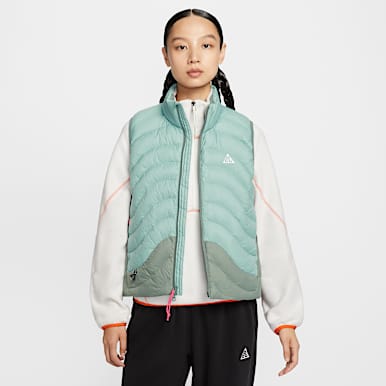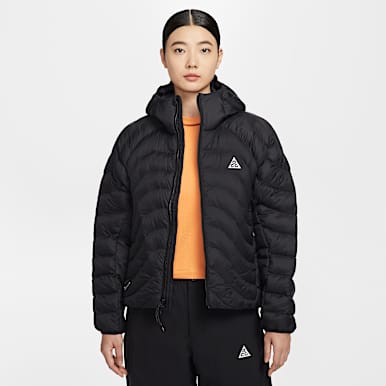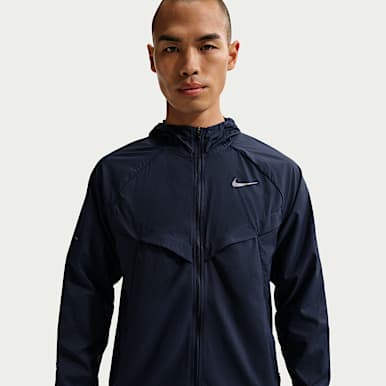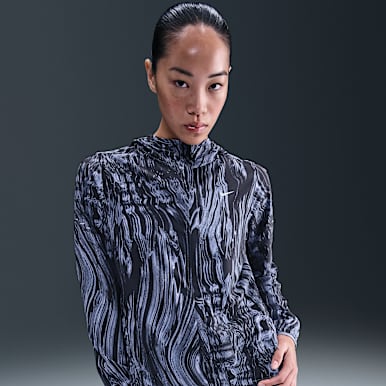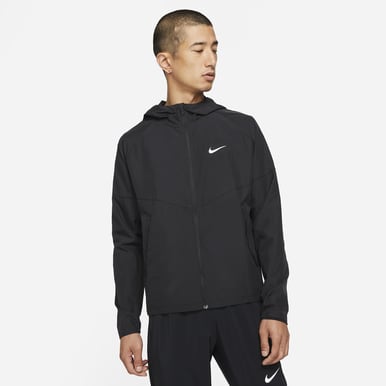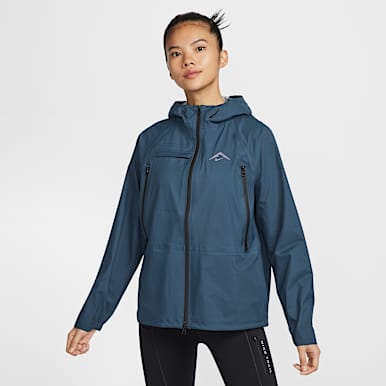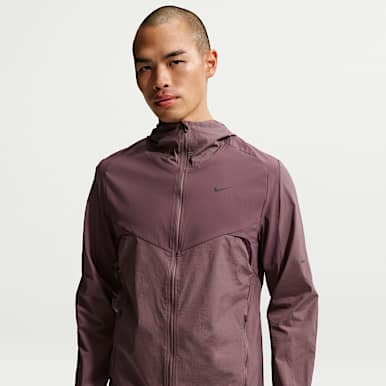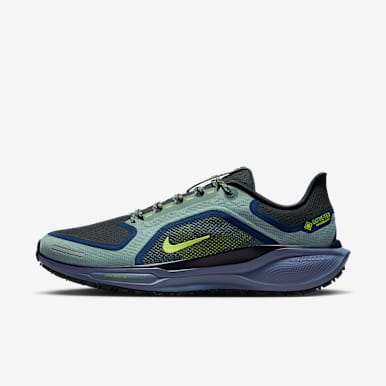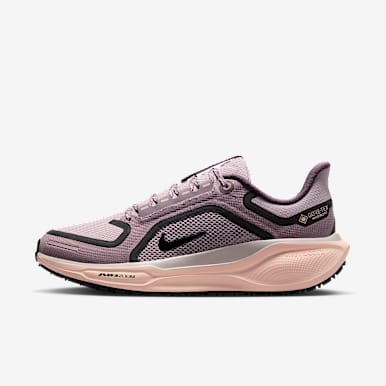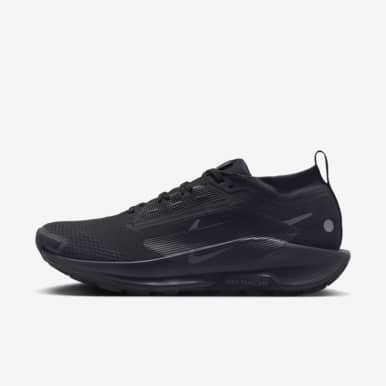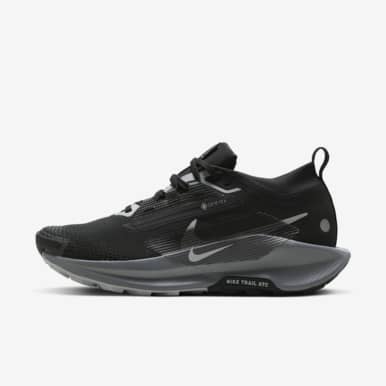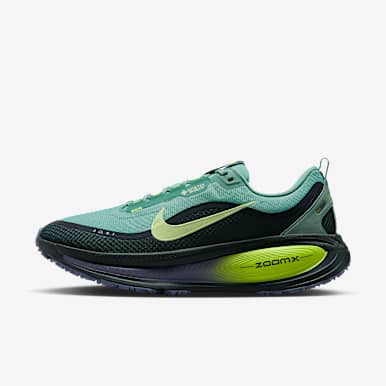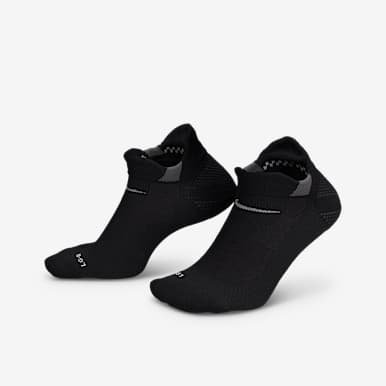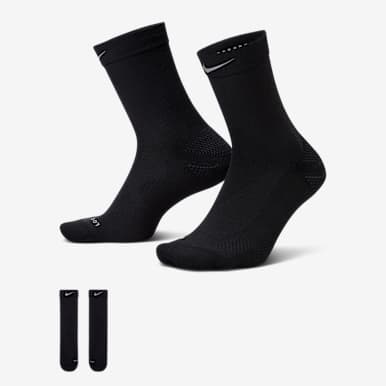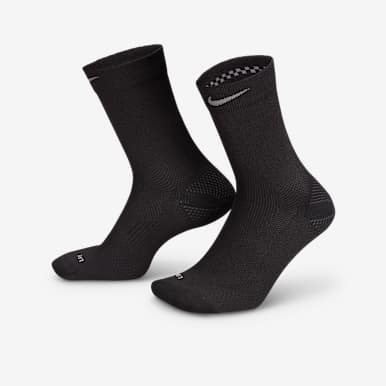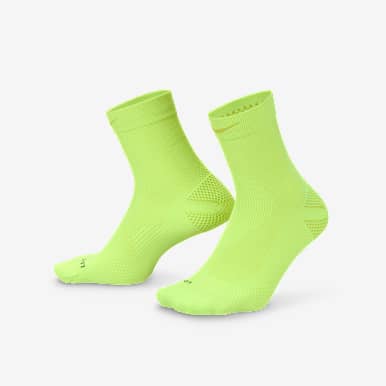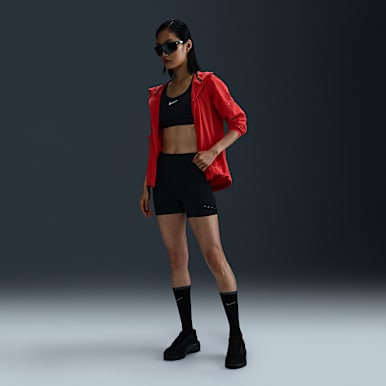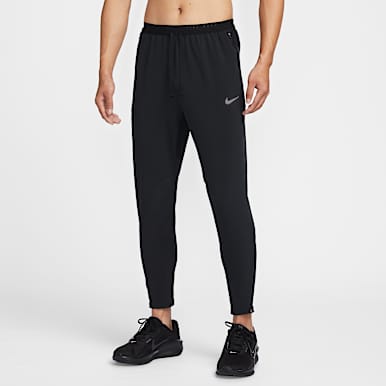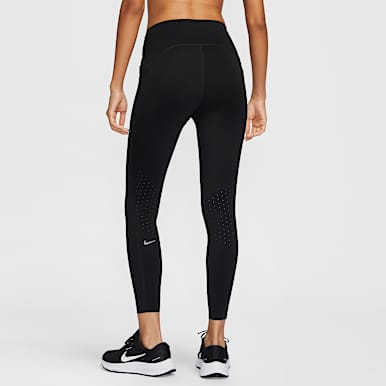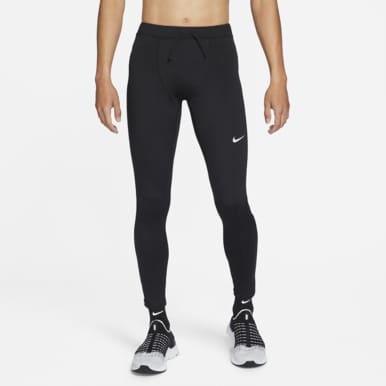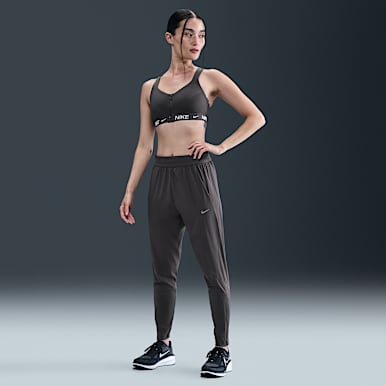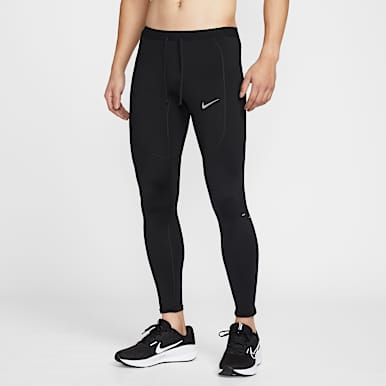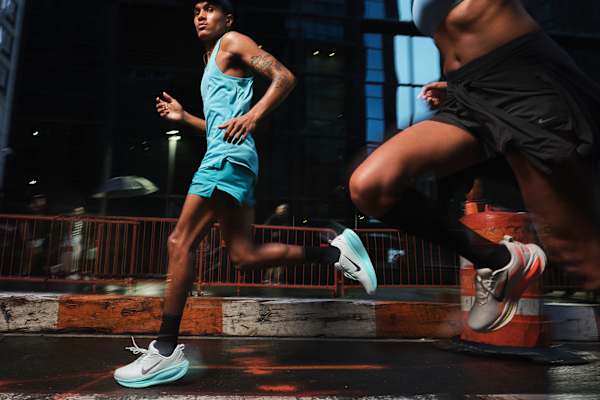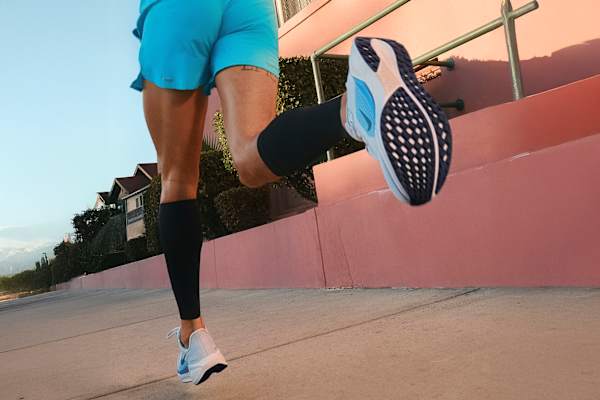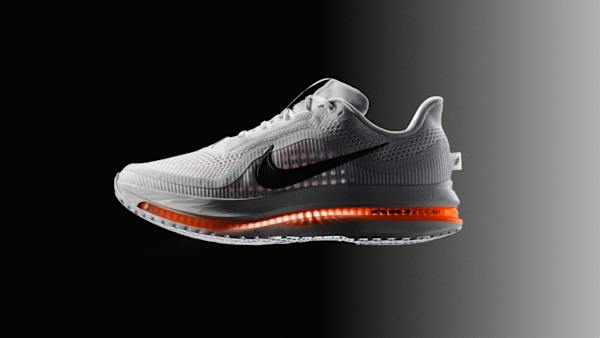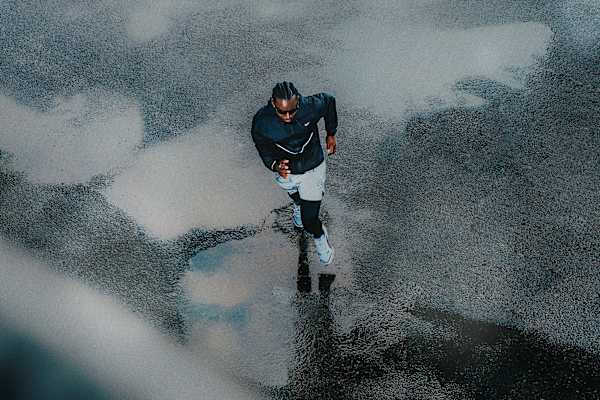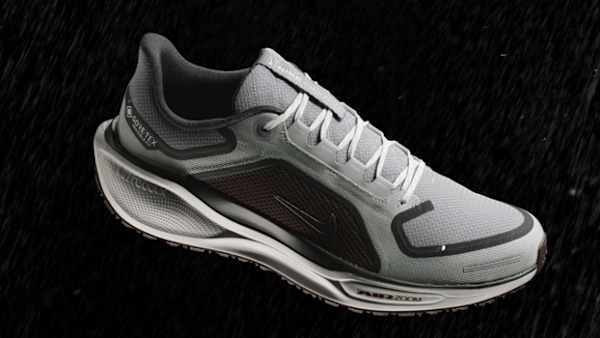Waterproof Running Gear for Rainy-Day Runs
Buying guide
Mother Nature doesn’t get to dictate when you workout. With the right running rain gear, you can run without getting completely soaked.
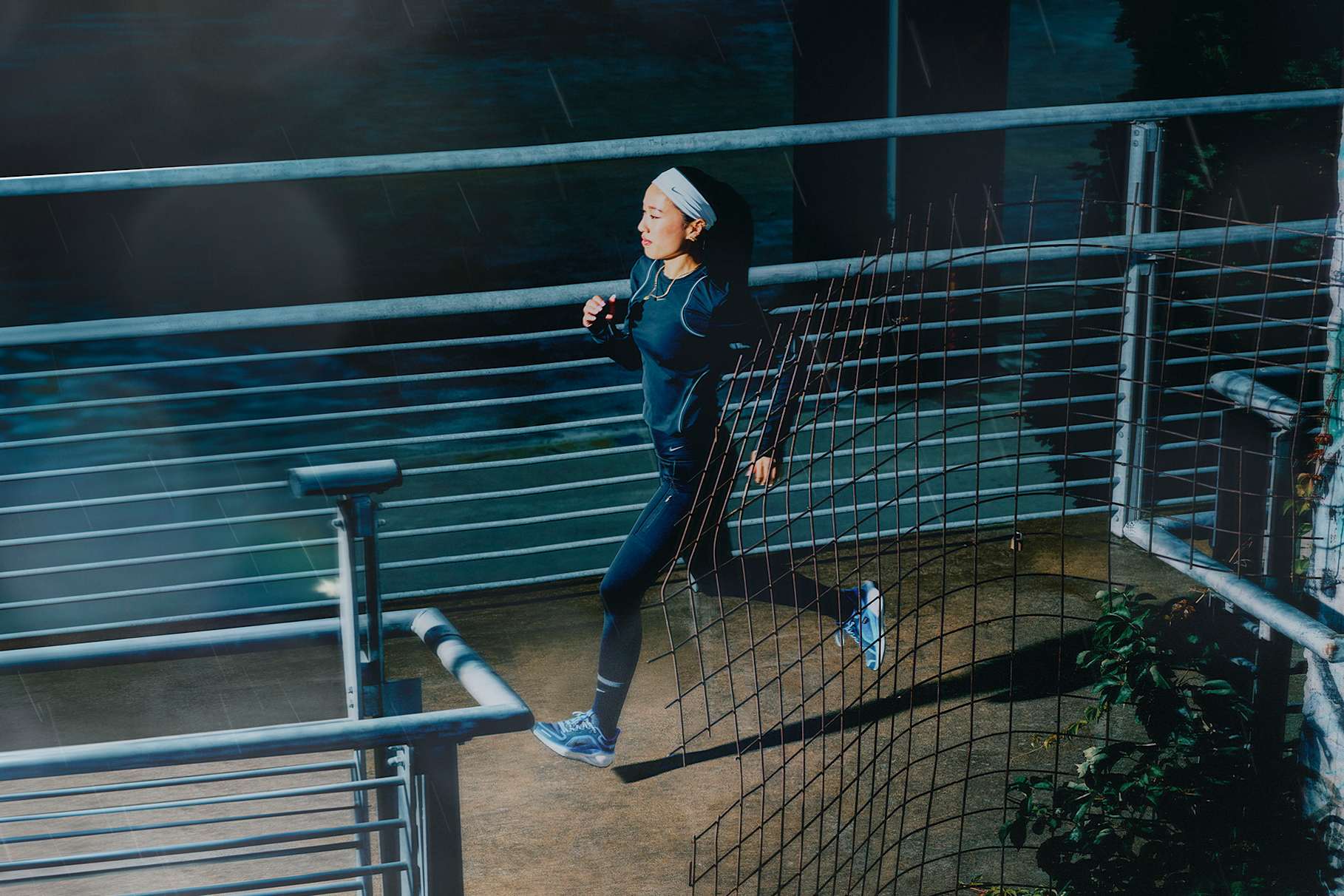
Your workout schedule won't always coincide with temperate, sunny days. From drizzles to downpours, the weather can be wildly unpredictable. But a rainy day doesn't need to be an obstacle to your training.
Plus, you might find you actually enjoy running in the rain, since it beats the heat and leaves the trails empty. While the competition stays indoors, build speed and endurance with gear designed for running in the rain. Here’s what you’ll need to get results without getting completely soaked.
What Kind of Rain Gear Do I Need?
Rain protection varies depending on the qualities of the jacket:
- Repel gear helps keep you dry in light rain.
- Storm-FIT gear resists water penetration, though there are limits to the amount of water and length of exposure it can withstand.
- Storm-FIT ADV gear is your tried-and-true-stay-dry-in-any-weather gear. These items generally have sealed seems and specific zippers to prevent water from seeping in.
Water-resistant items are ideal if you plan to break a sweat in moderate rain, because most water-resistant technology allows internal moisture to escape while still offering rain protection—and breathability is key for sweating in the rain. While fully waterproof gear keeps you dry, it's more difficult to ventilate, so look for features like zipped underarms.
7 Running Essentials
Review this list of rainy-day essentials to ensure you have what you need to run safely and comfortably in wet weather conditions.
1. Rain Jacket
The right jacket can make the difference between returning home soaked and staying dry. Look for a jacket that protects you from both water and wind and has fully taped seams and pockets that'll keep your electronics dry.
You'll also want the jacket to be breathable and sweat-wicking so you stay dry underneath. And search for one with a hood to help keep the rain off your head and neck.
If it's cold out, choose a jacket with synthetic insulation rather than down. Synthetic insulation retains warmth even when it gets wet. You might also decide to layer a breathable fleece jacket under a waterproof shell, depending on the temperature and what's most comfortable for you. Here are some of our top picks for every type of rainy weather, from sprinkles to sheets.
DRIZZLE
You'll need gear that is lightweight and water-resistant. Look for jackets designed to keep you active and help you stay dry in wet weather. A breathable Nike Repel jacket will do the trick. You can choose one that complements your style—and provides enough warmth for the season.
STEADY RAIN
You'll need gear that helps keep you dry even when the weather's not. Choose a jacket that protects you from the elements without being cumbersome. You'll need an anorak or running jacket with a durable barrier to wind and rain. Some Nike jackets fold into a pouch, making them perfect for unpredictable weather. If you'll be carrying your electronics, make sure the pockets on your jacket are secure. And if it gets chilly, add a running mid layer under your rain shell.
DOWNPOUR
You'll need gear that is waterproof and provides complete protection from the elements. Look for a jacket with Storm-Fit ADV technology, which includes sealed seams and thus makes water difficult to permeate. Then, play in the rain. Splash around. You'll stay dry.
2. Running Shoes
Whether you're running on roads or trails, you'll need extra traction when running on wet surfaces. Shoes with a lugged outsole will help prevent injury on slippery spots. You'll also want to make sure your running shoes are breathable and wick moisture away from the skin.
And since moisture can lead to friction and blisters, fit is even more important in the rain. So choose a pair of running shoes that don't slip on or rub the back of the heel.
If you’ll be running in the rain regularly, you should also opt for a pair of waterproof running shoes with GORE-TEX. The GORE-TEX technology prevents water from getting in while also allowing water vapor to escape so your feet stay drier. But since water can still get in around the shoe's collar, waterproof gaiters come in handy.
3. Waterproof Gaiters
Gaiters cover the tops of your shoes to seal out rain. If it's really pouring, they may be your only hope of staying dry. An over-the-ankle pair should be sufficient for running in the rain, but you might opt for a taller gaiter if you also hike through snow. Pick a pair that's snug so it doesn't ride up but also isn't so tight that it's uncomfortable.
4. Running Socks
Cotton socks absorb water, leaving your feet feeling heavy and cold. Opt for a pair of moisture-wicking running socks made from a blend of synthetic fabrics. Depending on the temperature, you might choose a lightweight pair or a thicker pair, but ensure they fit well with your running shoes.
5. Water-Resistant Trousers
While shorts are fine in warm-weather drizzles, water-resistant trousers will keep you particularly dry and prevent chafing in heavier rains.
Weather-resistant ripstop will protect you from the elements the most, but if you feel more comfortable in a pair of leggings, grab a pair of Dri-FIT leggings rather than a cotton pair. The high-performance microfibre construction will allow moisture to evaporate more quickly from the surface of the fabric.
6. Moisture-Wicking Tee
It's your jacket's job to keep the rain out, but it's your top's job to wick sweat away. Together, they'll keep you dry and comfortable. Nike Dri-FIT tops and t-shirts are designed to keep you dry and come in a wide variety of colours and styles.
In colder weather, choose a long-sleeve tee or layer a fleece between your top and running jacket for extra warmth.
7. Hat or Visor
Your hooded running jacket may keep your head dry, but it won't keep the rain out of your face. A wide-brim hat (or a visor in warmer weather) will shield your face so you can see clearly enough to navigate your route.
Tips for Staying Safe in Rainy Weather
- Choose clothing with reflective elements: Visibility is worse in the rain, and that puts you at greater risk when you cross the street. To help make sure drivers can see you, opt for a running jacket and pants with reflective material or add reflective tape to your running clothes.
- Don't run during a thunderstorm: Check the weather before your run. If there are reports of thunderstorms, stay indoors and run on the treadmill or choose an alternative at-home cardio workout. While getting struck by lightning isn't likely, it's the leading cause of death related to the weather.
- Dress for the weather: Even with waterproof clothing, you'll get wet running in the rain. That can make you feel colder in low temperatures and even increase your risk of hypothermia. Make sure you wear warm enough clothing to protect yourself. On the other hand, avoid too many layers on a hot day. Rather than helping you stay dry, layering will weigh you down in the rain.
- Be proactive about chafing: Moisture can cause chafing as you run, so apply an anti-chafing product to areas of friction like your underarms and inner thighs. You might also wear a pair of shorts with compression liners on hot days or a pair of compression tights under your running trousers on colder days.
- Bring dry socks: Soggy socks can slow you down. If you start to feel uncomfortably wet or notice your shoes are rubbing more than usual, changing your socks can help you keep running when you'd otherwise be ready to throw in the towel.
- Stay hydrated: Just because it's wet outside doesn't mean you can forgo drinking plenty of water. Bring a hydration pack, water flask or water bottle with you on your run and drink water at regular intervals.
- Exercise caution: For the most part, running in the rain is safe, but slippery areas can increase your risk of injury. Even if you have running shoes designed to give you maximum traction on muddy trails, you should still watch where you step. Survey the area as you run and avoid landing anywhere that seems precarious.
- Change out of wet clothes right after your run: You'll produce plenty of body heat during your run, but staying in wet clothes once you've cooled down can increase your risk of hypothermia. Moisture can also lead to yeast and other infections, so put on a set of dry clothing as soon as you return home from your run (or right after your post-workout shower).
FAQ: Running in the Rain
Is it okay to run in the rain?
As long as you wear protective clothing with reflective design elements and don't run in a thunderstorm, it's perfectly safe to run in the rain. Some runners even enjoy a rainy day run. Just make sure you dress for the temperature and always remove your wet clothes immediately upon returning home.
What’s the best running rain gear?
The best running rain gear is made from fabrics that resist the elements like wind and water. It's also important to wear garments with reflective design elements when running in the rain and choose running shoes that have sufficient traction for wet surfaces.
Can you catch a cold running in the rain?
Running in the rain in and of itself won’t make you sick. However, the resulting lower body temperature can make you more prone to getting sick if you’re also exposed to a virus. Viruses are commonly transmitted by touching an infected surface, then touching your mouth, nose or eyes, or breathing the air around an infected person.
